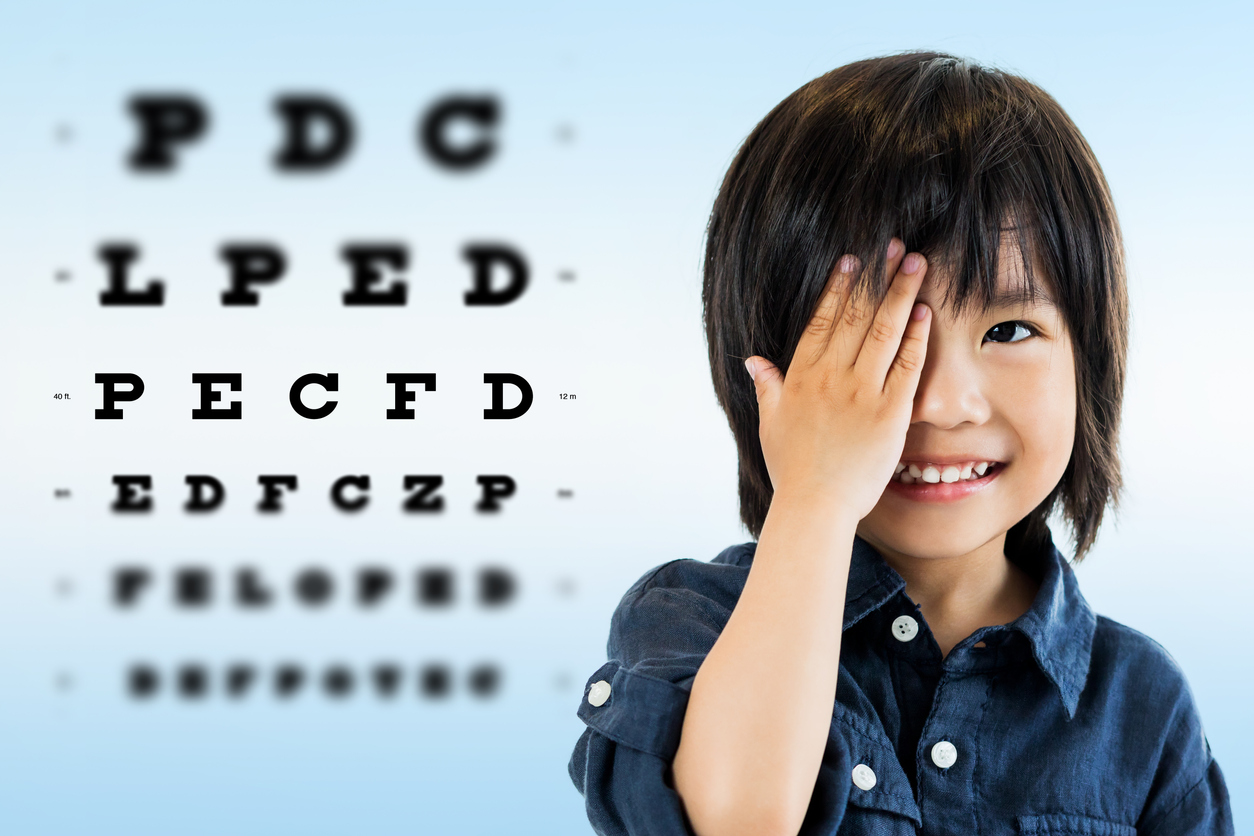We’ve all seen the eye examination sheet in the doctor’s office or at the DMV. Some of us might even consider it fun to determine how far down the chain of random letters we can go. However, for some, it’s a realization of an optometry problem. Dr. Ghosheh wants to help you achieve the best vision possible. The sooner you learn of a problem with your vision, or your child’s vision, the better it can be treated. Is there a specific age that is best for a children’s eye exam?
The Right Age to get a Children’s Eye Exam
The American Optometric Association has compiled a chart that shows the recommended frequency of eye examinations for children. The first recommended age to get an eye examination is around 6 to 12 months old. Chances are a child of that age cannot convey whether or not they have trouble with their vision. Doctors can check to see if the child’s eyes focus, are straight, and the presence of any internal eye disease.
The next recommended time to get your child’s eyes tested is between the ages of 3 to 5.
After that, it is recommended to get your child’s eyes tested annually from the beginning of elementary school through the end of high school. Many children have yearly checkups anyway, so this test can be conducted then.
Factors that Place your Child at Higher Risk for Vision Problems
There are many factors that can place your child at a higher risk for developing vision trouble. These are things that your doctor should be made aware of if they exist. The first is complications during pregnancy or childbirth, such as premature birth, infection in mother during pregnancy, maternal substance abuse during pregnancy, or difficult delivery. If your child has low weight at birth, or needed oxygen assistance at birth, this can also put them at higher risk for poor vision. Another major factor has to do with genetics. If one of the parents or sibling of a child has an eye problem, they are at a higher risk of contracting a problem as well.
Why a Children’s Eye Exam is so Important
There is a possibility of reversing life-altering vision problems if you catch it early. Common vision problems, such as a lazy eye and crossed eyes, can be reversed if caught early enough. The longer a condition with the eyes is allowed to exist, the harder it is to make it better. Just because you can’t see anything wrong with your children’s eyes doesn’t mean they are healthy. There are many conditions that are not visible without proper medical testing. Contact your Orange County eye doctor today to find out when your child should go in for their next eye examination.
At-Home Eye Tests
Although there is no substitute for a proper medical examination of the eyes, there are some tests that you can do at home with your child between scheduled examinations. The American Academy of Opthalmology doesn’t recommend you solely utilize this test, but have this be a useful addition to the properly performed testing.
Going to the AAO website, they have a test chart you can print out that contains the letter E in various sizes, and pointing in various directions. Print out this chart, tape it to a wall in your home, and place a chair 10 feet from the chart. If the space is poorly lit, be sure to use a flashlight to achieve the proper illumination of the chart. Have your child sit on the chair with one eye covered, and then ask them to determine which direction the E is pointing. Continue through the chart, taking note of correct and incorrect answers. Have them do this again with the other eye covered.
The chart is handy because it has the vision association located next to each line, so you can easily tell if your child has 20/40 or 20/30 vision depending on which line they can no longer see. Children ages 3 to 4 should be at 20/40 and children around age 5 should be at 20/30. It isn’t until your child gets older that they are expected to be at 20/20 vision. If you have additional questions about children’s vision health, reach out to Dr. Ghosheh today!

